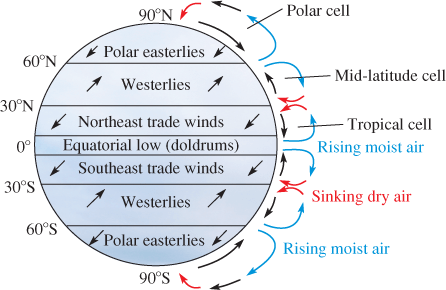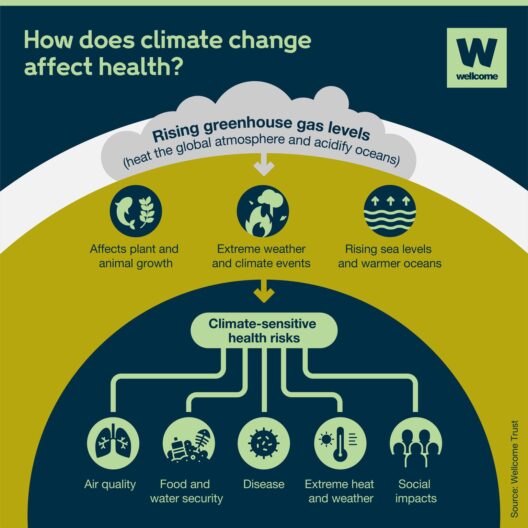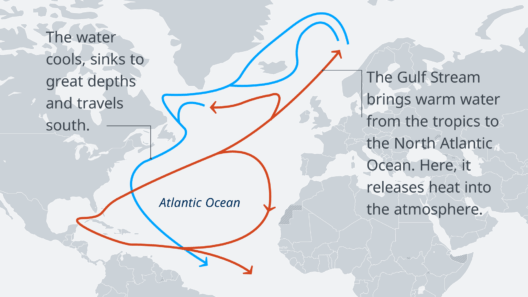Imagine for a moment: what would happen to our planet’s biodiversity if the delicate symphony of our ecosystems went silent? As climate change unfurls its tendrils across the globe, it beckons a playful yet pressing question—how do these shifting climatic patterns affect the myriad of animals that inhabit diverse biomes, from vibrant coral reefs to desolate polar ice caps? The stark reality is that as temperatures rise, habitats evaporate, and food webs disintegrate, countless species find themselves grappling with unprecedented challenges.
Climate change encapsulates various phenomena, but at its core, it engenders a fundamental alteration of temperature regimes and precipitation patterns. These changes ripple through ecosystems, influencing everything from reproduction rates to migration behaviors. The repercussions are particularly pronounced in areas teeming with marine and terrestrial life, where even slight fluctuations can spell doom or prosperity for species reliant on specific environmental conditions.
Coral reefs, often hailed as the rainforests of the ocean, are among the most vulnerable ecosystems impacted by climate change. These structures, which harbor approximately 25% of all marine life, are particularly sensitive to heat. As ocean temperatures continue to soar, corals experience a phenomenon known as coral bleaching. During this event, corals expel the symbiotic algae (zooxanthellae) that provide them with food and vibrant color. Without these algae, not only do corals lose their nutritional source, but their ability to recover from other stresses is significantly diminished. This has cascading effects: fish species dependent on coral reefs for shelter and feeding are forced to relocate or face extinction.
The bleached wastelands result in diminished fish populations, which not only disrupt local fisheries but also affect communities that rely on these resources for their livelihood. For instance, take the Great Barrier Reef in Australia, a UNESCO World Heritage Site that has witnessed mass bleaching incidents in recent years. The socio-economic implications are profound, raising questions about marine conservation and sustainable tourism. How do we balance ecological preservation with human needs? The challenge is formidable.
As we traverse the globe, our attention shifts to the creatures of the Arctic, where polar bears epitomize the struggle against climate change. These majestic predators are increasingly finding themselves in peril as sea ice melts due to rising global temperatures. Polar bears rely on sea ice as a platform for hunting seals, their primary source of sustenance. The decline in ice not only hampers their ability to hunt but also forces them to traverse greater distances in search of food. Consequently, their physical condition deteriorates, leading to lower cub survival rates and higher instances of human-wildlife conflict as bears venture into populated areas in search of sustenance.
The plight of the polar bear exemplifies a broader pattern observed in Arctic ecosystems. Species such as walruses and seals are similarly facing challenges due to shifting ice patterns and altered prey availability. The melting of permafrost also exacerbates these issues, releasing previously trapped greenhouse gases that further accelerate global warming. Thus, it’s a vicious cycle—one where the livelihoods of indigenous communities reliant on stable ecosystems are also jeopardized.
Even more astonishing is the impact of climate change on animal migration patterns. Take, for instance, migratory birds, whose annual journeys are synchronized with seasonal changes. Recent studies suggest that as climates warm, some species are shifting their migratory timings and routes, which can lead to mismatches between birds and the availability of food sources at their destinations. A loss of synchronization could prove disastrous, potentially leading to decreased reproductive success and population declines.
In addition to birds, many terrestrial animals, such as caribou and monarch butterflies, face similar threats. The disruption of well-established migratory routes thus poses a challenge not only for wildlife but also for ecosystem health and stability. It raises an important question: as species adapt, will they succumb to the pressures of climate change, or will they find innovative solutions to persist amidst the turmoil?
Weather patterns themselves are also affected by climate change, leading to more extreme weather events—such as droughts, floods, and hurricanes. These events can devastate habitats and decimate animal populations. Consider the plight of amphibians, which are already among the most threatened groups of animals on the planet. Their permeable skin makes them particularly susceptible to environmental changes, and extreme weather can lead to habitat destruction and direct mortality.
The intricate interdependencies between species and their habitats underscore the urgency for comprehensive conservation strategies. As we grapple with the reality of climate change, a fundamental misconception arises: that protection measures are solely about preserving individual species. The challenge extends to safeguarding entire ecosystems, ensuring their resilience against climatic shifts.
In conclusion, while the narrative around climate change often emphasizes human contributions and responsibilities, it is equally crucial to spotlight its extensive impacts on the world’s fauna. The far-reaching implications—from coral reefs to polar ice caps—invite a call to action. The time for discussion and deliberation has passed; the focus now must shift toward immediate and effective conservation efforts and policies that enhance the adaptability of animals in the face of changing climates. So, as we ponder our role in this unfolding crisis, let us remain vigilant and proactive. After all, our fate is intrinsically linked to that of the diverse species with whom we share this planet.





